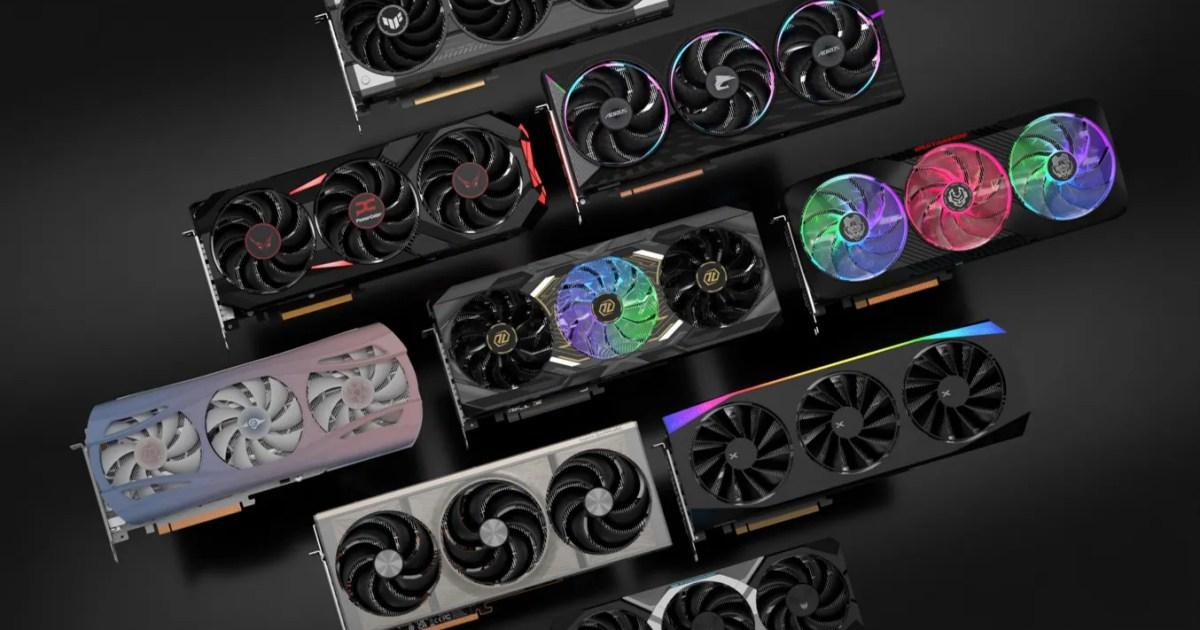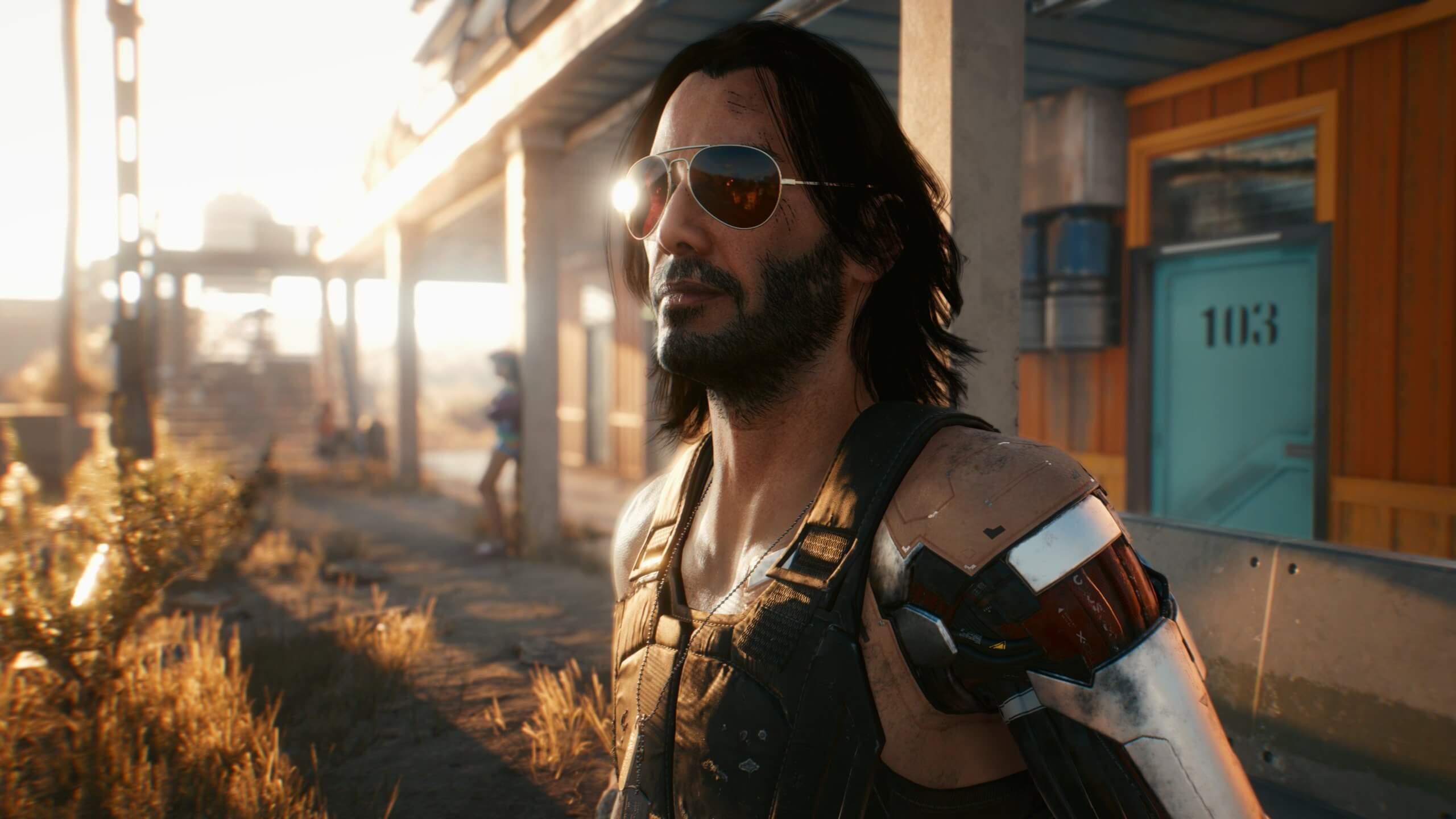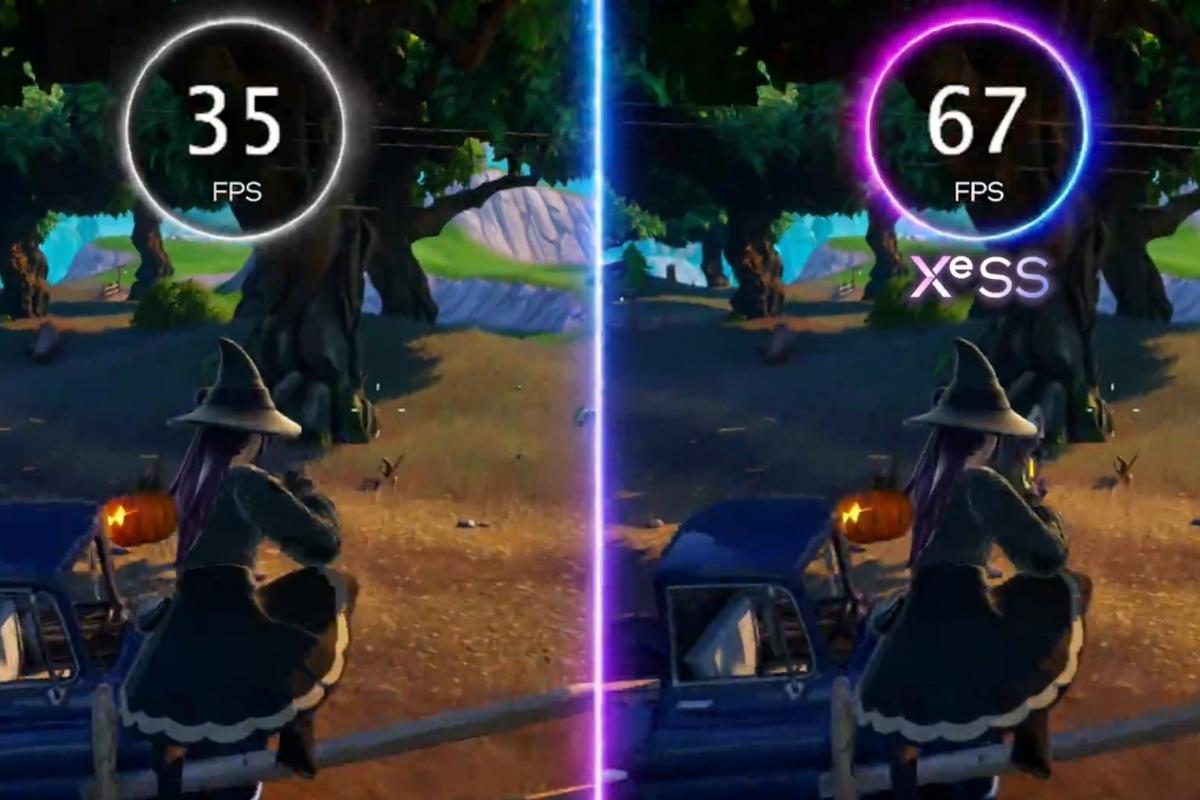- FSR 4 offers a leap in quality compared to FSR 3.1, with official support focused on RX 9000 and drivers that expand their range in DX12 games with FSR 3.1.
- In games with native FSR 4, simply use the appropriate DLLs; in unsupported titles, OptiScaler and AMD GPU Profile Manager allow you to force its activation.
- There is an unofficial method for RX 6000 using DLL swapping that enables FSR 4 with good performance, although it can cause ghosting and is not supported by AMD.

If you're wondering how to enable FSR 4 in your games, you've come to the right place: here we've gathered what already works officially, what can be forced with community utilities, and the Tricks which are being used by the most enthusiastic users. In recent weeks, drivers, tools, and alternative methods that allow you to enjoy FSR 4 in more titles than you imagined, with important nuances depending on your graphics card.
First of all, let's get our bearings: FSR 4 is AMD's upscaling with best quality to date, powered by IA and acceleration by hardwareAMD is expanding its support through drivers and game updates, while the community has created shortcuts to activate FSR 4 where it's not yet officially available. Note that some solutions are experimental, others depend on the game, and They may not work or are not recommended for games with anti-cheat systems.
FSR 4 today: quality, driver support, and which GPUs take advantage of it
FSR 4 arrives with a clear improvement over FSR 3.1, offering a noticeable leap in image sharpness and clarityOfficially, AMD limits FSR 4 compatibility to the Radeon RX 9000 series (RDNA 4), as these cards integrate the AI hardware designed for this version. At the same time, the company is expanding the availability of FSR 4 mode in games by leveraging its latest driver packages, which enable the upgrade path in titles using FSR 3.1, especially those in DirectX 12.
With the Adrenalin 25.9.1 drivers, AMD announced FSR 4 support in all DX12 games that already have FSR 3.1These drivers can be installed on cards with first-generation RDNA architecture and higher (Radeon RX 5000 series and up), although the full FSR 4 experience is still officially reserved for the RX 9000 series. Conversely, Radeon RX Vega and previous GPUs based on GCN 5.0 They are not compatible with these controllers.
Following this update, the List of games ready for FSR 4 It is already approaching three figures and, specifically, there was talk of 85 titles at that time, with names like F1 25, Mafia The Old Country, Hell is Us, Call of Duty Warzone, The Elder Scrolls Oblivion Remastered, The Alters, and Lies of P, among others. Additionally, the drivers add support for recent releases like Borderlands 4 and Hell is UsThey fix bugs and include a section for known errors pending correction.
If you're unsure which GPU to buy, AMD's official recommendation is clear: go for a Radeon RX 9000 ensures native access to FSR 4 and better ray tracing performance compared to the RX 7000. Even so, as we will see below, the community has found ways to experiment with FSR 4 in other series, with interesting results, although not endorsed by AMD.
How to enable FSR 4 in officially supported games (and the case of Cyberpunk 2077)

In titles that have already received the FSR 4 update, there are two scenarios. On the one hand, when AMD releases the appropriate driver, simply updating and activating FSR 4 is sufficient, either from within the game itself or from the Adrenalin overlay. On the other hand, in some cases It has been possible to place the new FSR 4 DLLs directly into the game folder so that it works without extra tools, a useful method while AMD closes the gap between the game patch and the driver.
Precisely with Cyberpunk 2077 A peculiar situation arose: the game added FSR 4 support before the appropriate public driver was available, leading to the use of a specific “SI” driver hosted by AMD to enable FSR 4 early. It was indicated that package 25.6.3 was not compatible, and that the official one (25.7.1) would be released shortly. If you are in this situation, check the official AMD link and apply it only if it matches your hardware and needs; when the equivalent public driver is released, The normal thing to do is to switch to the general branch and install the latest stable version.
A useful note: if the game includes native FSR 4, the community has found that installing the three required DLLs from FSR 4 In the executable's directory, activate the function without intermediaries. It's a simple solution for specific cases, but remember that OptiScaler is not required in games with native support and it only comes into play when the title does not offer FSR 4 out of the box.
Enable FSR 4 in games not supported by OptiScaler
Key requirements before starting: FSR 4 officially requires, a Radeon RX 9000 (RDNA 4)OptiScaler works best in DX11 and DX12; compatibility with Vulkan or other APIs is not 100%. Keep in mind that games with strict anti-cheat (EAC, BattlEye, etc.) can block this type of injection, and even result in online penalties, so avoid using them in multiplayer competitive.
The basic installation procedure for each game is straightforward, but it requires doing it individually. Download the latest version from GitHub, extract its files, and Copy them to the game's executable folderNext, run OptiScaler Setup or Windows Setup, choose a name for the new DLL, select your GPU (NVIDIA, AMD or Intel) and decides whether to use DLSS-based inputs or not. In titles with FSR 3 or higher, There is no need to enable DLSS inputs.
Once in the game, open the OptiScaler overlay with the Insert key. From there you can select the scaler: the typical way to activate FSR 4 is First select FSR 3x and press the “Change scaler” button.From that moment on you will see the FSR 4 settings tab in the tool and you will be able to adjust the presets (Quality, Performance, etc.) according to your preferences.
To control the performance monitor, remember that the overlay allows you to toggle the FPS view with PAGE UP and expand statistics with PAGE DOWNIn the enlarged view, the overlay explicitly indicates which combination is active, displaying strings such as “FSR 3 -> FSR 4” or, if you have configured XeSS in-game, “XESS -> FSR 4”, which is a quick way to verify that the scaler replacement has been applied correctly.
A small detail for those experimenting with DLSS entries: if you choose this route and the title does not validate signatures by default, you will need to run the NVIDIA Override registry The corresponding file, specifically DlssOverrides > EnableSignatureOverride.reg. If something goes wrong, the project's wiki on GitHub compiles solutions and known cases where additional adjustments need to be applied.
Keep in mind that there is no universal installer; you have to repeat the process for each game. In practice, when you want to port FSR 4 to a new title, copy the essential files to the executable folder, run the OptiScaler setup, and Configure the overlay as you did previously.Each game maintains its own profile and internal settings.
Force FSR 4 using AMD GPU Profile Manager (whitelist override)
Another very powerful option is AMD GPU Profile Manager, a tool created by Mikhail that allows remove the FSR 4 whitelist and force its activation in titles compatible with FSR 3.1, even if AMD hasn't yet enabled it in your drivers. This is especially useful in cases like Cyberpunk 2077, where the game adds FSR 4 but the public driver takes time to align.
The recommended process is simple: first activate FSR 3, launch the game, and let Adrenalin confirm if FSR 4 is now activeThe tool doesn't work in all games (anti-cheat systems often block it), but when it does, it unlocks next-gen upscaling without waiting for the official update. There's also a shared spreadsheet that shows which games the override is working in and which it isn't, which is very handy for saving time.
AMD GPU Profile Manager is available on GitHub, and its author has indicated that more features will be added. There, with the ambition of becoming a kind of “Profile Inspector” for AMDThere's talk of incorporating more profile edits and expanding control over advanced parameters, which would be pure gold for fine-tuning game-by-game scaling behavior.
An additional advantage of this approach is that it facilitates early adoption of FSR 4 in titles where there are only DLSS-4If you have an RX 9000, the FPS boost can be noticeable, and it allows you to choose your preferred scaler without relying on studio patches.
Unlocking FSR 4 on Radeon RX 6000: The (unofficial) DLL swapping method
Where the community has truly surprised everyone is with a method to activate FSR 4 in the Radeon RX 6000 series (RDNA 2)The key lies in swapping two DLL files in the Adrenalin driver: amdxc32.dll and amdxc64.dll. This involves extracting older versions of the driver using 7-Zip or WinRAR, locating these files, and replacing them with the latest version. After reinstalling, FSR 4 will be unlocked on the RX 6000 series.
The evidence that has emerged is striking: in Kena: Bridge of Spirits, an RX 6800 with FSR 4 in Quality mode showed a visual quality very close to that of an RX 9070with stable FPS and without the 10-20% drops seen in previous attempts. Furthermore, the Native, Quality, and Performance presets work as expected, allowing you to prioritize quality or performance as needed.
However, not everything is perfect: users have reported Noticeable ghosting when applying this trick on RX 6000There are two ways to mitigate this: modify the GPU driver (at your own risk) or revert to a previous stable version, such as Adrenalin 23.9.1, where the behavior is more predictable. Remember that this is a procedure not supported by AMD and that The company can block these types of modifications in future drivers.
This finding suggests that RDNA 2 hardware still has room to grow with the latest upscaling techniques, and calls into question the true extent of FSR 4's exclusivity on the RX 9000 series. Even so, if you decide to go down this path, assume it's experimental, that It does not guarantee long-term stability and that may require reverting to previous drivers.
Compatibility, requirements, and limitations you should keep in mind
Beyond the methods, it's worth reviewing the restrictions to avoid surprises. Officially, FSR 4 is designed to Radeon RX 9000 (RDNA 4)The Adrenalin 25.9.1 drivers bring broad installation compatibility from RDNA 1, but that doesn't mean the FSR 4 flow is enabled on all those GPUs; AI hardware acceleration remains the key.
OptiScaler is best suited for DirectX 11 and 12 games. If your title uses Vulkan or another API, Don't expect full support Right now. Its use in multiplayer games with anti-cheat is also not recommended; DLL injection can be detected and result in warnings or suspensions, so limit it to offline campaigns.
Community tools don't install anything at the system level; they work with local game files. Even so, best practice dictates that back up the game folder Before touching anything, in case you need to revert changes. If a game "doesn't start" after injection, restoring the copy will save you from reinstalling.
In games with native FSR 4 support, it is usually enough to place the three FSR 4 DLLs in the executable directory To activate it, without using OptiScaler. Otherwise, the OptiScaler sequence (FSR 3x > Change scaler) is the usual shortcut to make FSR 4 appear as an option within the overlay.
If you're going to use DLSS inputs, remember to apply the NVIDIA signature override with registration (DlssOverrides > EnableSignatureOverride.reg). Without this step, some games will not accept the libraries and the alternate scaler will not be activated, resulting in errors or the title Boot without the replacement.
Verification, overlays, and small usage tricks
The most transparent way to check if FSR 4 is active is to look at the real-time overlay. With OptiScaler, the Insert key opens the menus; Page Up toggles the FPS counter, and Page Down accesses more metrics. Look at the string it displays. which entry and exit climber It is being used, such as “FSR 3 -> FSR 4” or “XESS -> FSR 4”. If “FSR 4” does not appear on the right, the replacement is not working.
In the AMD Adrenalin panel, you can also see if FSR 4 is enabled when you force it through GPU Profile Manager. First, enable FSR 3 in the game, run the tool, and Check that Adrenalin reports the change to FSR 4If the transition doesn't happen, check the whitelist and the game's profile in the tool, because some titles require specific adjustments.
If you notice trailing or ghosting effects, especially on RX 6000 cards with the DLL trick, consider reverting to an older driver like 23.9.1 or fine-tune the scaling settings Changing the preset (Quality is usually the most balanced) can help. In some games, FSR 4's Native mode improves cleanup without altering the rendering scale, which is useful for assessing whether traces are reduced.
When the game already includes FSR 4 by default (or has been recently patched), the wisest course of action is to avoid using intermediate tools. Copy the correct DLL files from the scaler to the game directory and use the native menu setting It avoids conflicts and ensures compatibility with future patches.
If you're coming from a driver version that's not compatible with the desired workflow (for example, 25.6.3 in this case), install the appropriate package. At times, AMD released temporary "SI" drivers that They activated FSR 4 before the public branchAs soon as the equivalent general driver is released, update to benefit from fixes and broader support.
Passionate writer about the world of bytes and technology in general. I love sharing my knowledge through writing, and that's what I'll do on this blog, show you all the most interesting things about gadgets, software, hardware, tech trends, and more. My goal is to help you navigate the digital world in a simple and entertaining way.
